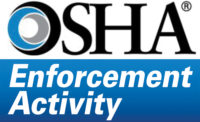The National Safety Council and the American Staffing Association have jointly published a case study addressing the safety obligations of staffing companies and host employers to temporary workers. The case study was published in conjunction with the two organizations’ respective alliances with the Occupational Safety and Health Administration.
The fictional case study is based on past citations issued by OSHA in connection with temporary workers’ on-the-job injuries. The ASA–NSC case study provides practical information so staffing companies and host employers can better protect temporary workers from workplace injuries, and understand which party is responsible for recording injuries on the OSHA form 300 injury and illness log. Some of the recommendations provided include:
The staffing company and host employer should determine which party controls workplace activities, conditions, and hazards, and thus is in the best position to provide required site-specific safety and health protections. Once determined, this information should then be included in a written agreement that addresses both parties’ responsibilities.
The staffing firm and host employer should adopt procedures to ensure that safety obligations are fulfilled.
If a host employer or staffing company learns that a temporary worker has been injured on the job, it should promptly notify the other party. If the injury is fatal or serious enough to warrant hospitalization, amputation, or loss of an eye, the party that provides day-to-day supervision over the temporary worker (usually the host employer) should promptly notify OSHA. “Ensuring temporary worker safety is a top priority for ASA and its member companies,” said Stephen Dwyer, ASA general counsel. “This case study will help staffing firms better understand their responsibilities regarding temporary worker safety.”
The case study also offers steps for host employer managers to protect the safety and health of temporary workers under their supervision, and information on what all workers should know about their rights to a safe workplace.
“The case study illustrates how lack of communication and coordination between a staffing firm and a host employer can adversely impact the wellbeing of a temporary worker” said Amy K. Harper, Ph.D., director of workplace strategy and Journey to Safety Excellence at the National Safety Council. “Each employer must know and reliably carry out their respective roles in hazard identification, safety training and injury reporting and recording.”
ASA and OSHA recently renewed their alliance to provide association members and others with information, guidance, and access to training resources to help them protect the health, safety, and rights of temporary workers.
The alliance between the National Safety Council and OSHA also addresses temporary and contract workers as well as motor vehicle safety, construction safety and the importance of establishing injury and illness prevention programs. The two organizations also agree to support and promote the Council’s Journey to Safety Excellence campaign. Visit nsc.org/journey for more information.










